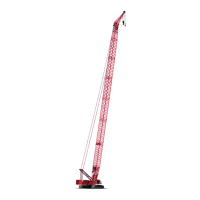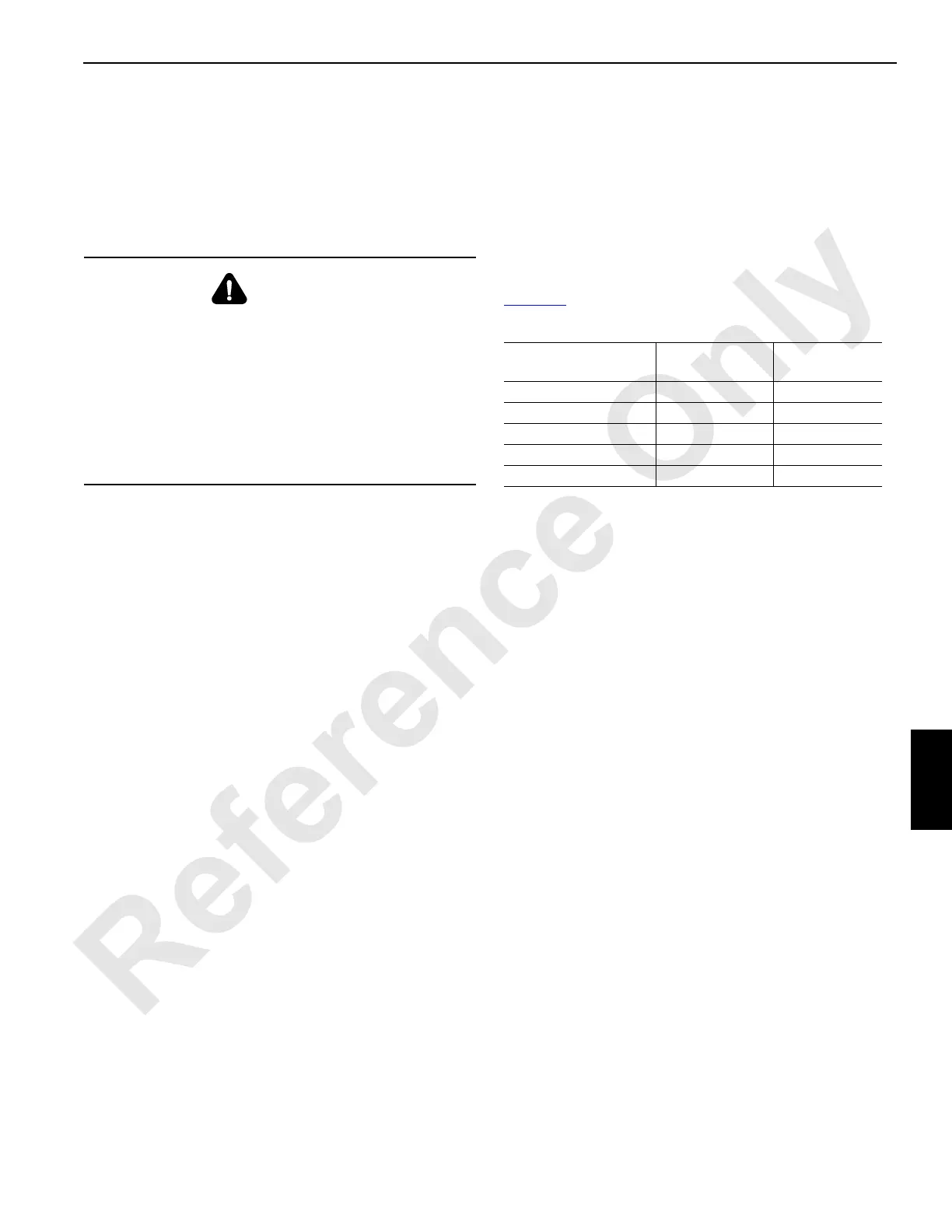Manitowoc Published 05-03-17, Control # 228-03 7-1
16000 SERVICE/MAINTENANCE MANUAL POWER TRAIN
SECTION 7
POWER TRAIN
BATTERIES
Safety
Improper use of a booster battery to start a crane when the
normal battery is inadequate presents a definite explosion
hazard. To minimize this hazard, the following procedure is
suggested:
1. Connect both jumper cables to the battery on the crane
to be started. Do not allow the opposite ends of the
cables to touch.
2. Connect the positive cable to the positive terminal of the
booster battery.
3. Connect the negative cable to the frame or block of the
starting vehicle. Never connect the remaining cable to
the grounded terminal of the starting vehicle.
If electrolyte comes in contact with eyes, skin, or clothing, the
area must be immediately flushed with large amounts of
water. Seek first aid if discomfort continues.
Causes of Battery Failure
Overcharging
Overcharging is the number one cause of battery failure, and
is most often caused by a malfunctioning voltage regulator.
Excessive heat is the result of overcharging. Overheating
causes the plates to warp, which can damage separators
and cause a short circuit within a cell. This bubbling and
gassing of the electrolyte can wash the active material from
the plates, reducing the battery’s capacity or causing an
internal short.
Undercharging
Undercharging can cause a type of sulfate to develop on the
plates. The sulfate causes strains in the positive plates which
causes plate buckling. Buckled plates can pinch the separa-
tors and cause a short circuit. Also, an undercharged battery
is not only unable to deliver power, but may freeze (see
Table 7-1
).
Table 7-1 Battery Freeze Points
The sulfate condition can eventually be converted to metallic
lead, which can short the positive and negative plates. These
small shorts can cause low cell voltage when the battery is
charged.
Lack of Water
The plates must be completely submerged. If the plates are
exposed, the high acid concentration will char and disinte-
grate the separators. The plates cannot take a full charge if
not completely covered by electrolyte.
Hold-Downs
Loose hold-downs will allow the battery to vibrate in the
holder. This can cause cracks or wear in the container and
cause acid to leak. Leaking acid corrodes terminals and
cables causing high resistance battery connections. This
weakens the power of the battery. Overtightened hold-downs
can also distort or crack the container.
Overloads
Avoid prolonged cranking or the addition of extra electric
devices which will drain the battery and may cause
excessive heat.
Multiple Battery System
Multiple battery systems are connected either in series or in
parallel. Always refer to the Wiring Diagram for the correct
connection.
NOTE: Installing batteries with reversed electrical
connections will damage the batteries and the
crane’s electrical system, voltage regulator, and/or
alternator.
WARNING
Batteries can Produce Explosive Gases!
Do not smoke, use open flame, or create an ark or sparks
near the battery. Ventilate well when in an enclosed area
and when charging. Do not disturb the connection
between the battery and the charger cables until the
charger has completed its cycle. Reversing the
connection of the charging equipment or the batteries will
damage the batteries, the crane’s electrical system and
may cause an explosion.
State of Charge
Specific
Gravity
Freeze Point
°C (ºF)
100% 1.26 -57 (-71)
75% 1.23 -38 (-36)
50% 1.20 -26 (-15)
25% 1.17 -19 (-2)
DISCHARGED 1.11 -8 (18)

